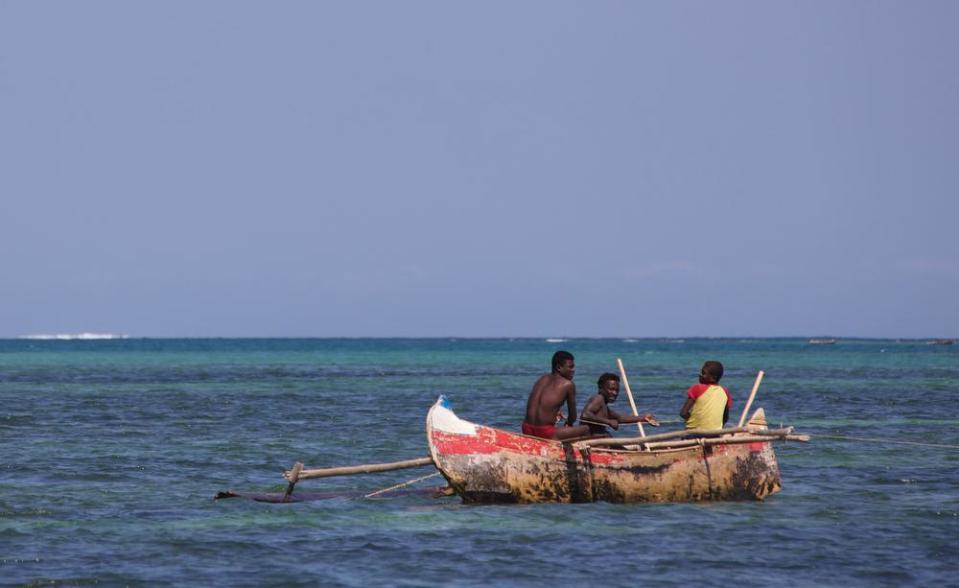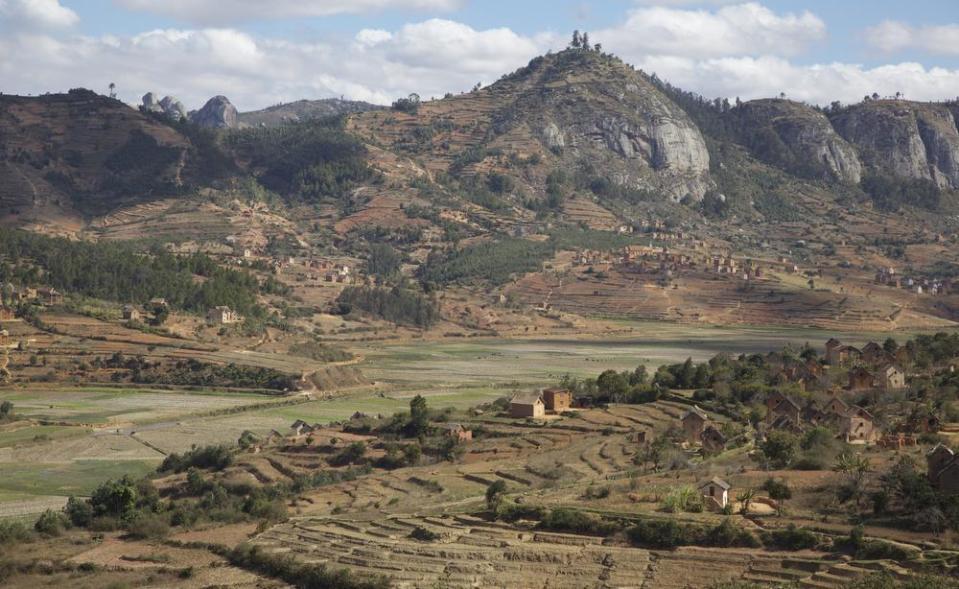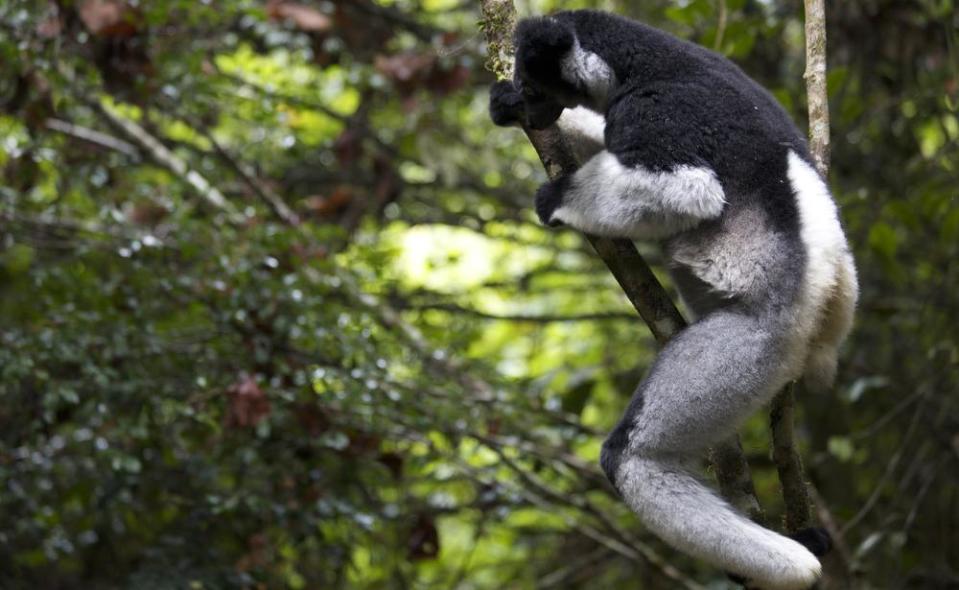Splendid isolation on awesome island
Stephen Scourfield sees some rare wonders.
I check out from a rainforest lodge early in the morning, feeling that I may never get dry again.
I’ve been at the lodge near Madagascar’s Ranomafana National Park for a couple of days and (appropriately enough) it has been so consistently wet that even my case feels heavier, just through the moisture its contents have absorbed.
I travel on and by lunchtime I am in a granite landscape, at a market where the local zebu cattle are being sold. Men stand around, thin legged, leaning on sticks, forming temporary pens around the many hundreds of beasts. The two groups stand eye to eye.
By evening I on the high savannah Plateau de Horombe — dry and golden and with sandstone formations reminiscent of the Kimberley’s Bungle Bungle.
Madagascar’s story is one of micro climates, as much as it is one of isolation.
Many million of years ago, this 1600km long island between us and Africa was a plateau at the heart of Gondwana — the largest continent this planet has ever seen, and which included Australia and what is now the African continent. As geological plates moved and the sea level rose, Gondwana broke apart and Madagascar drifted away, still attached to India.
Then, 65 million years ago, it broke off, and has since been isolated in the Indian Ocean, to become an experiment in evolution. Some 80 per cent of the species that live in Madagascar are found nowhere else, including 72 species of lemur, which evolved separately as a separate branch of the primate family tree.
Its micro-climates emphasis the shift in landscape, too. They are dramatic — from dense rainforest to a spiny desert dotted with cacti, to baobab trees, all within this one day.
Madagascar is, of course, a regional neighbour, and tourism has been quietly, slowly growing there.
I have been following the slow changes in Madagascar closely for more than a decade, weighing up its readiness as a suggestion. It all seemed to come to some fruition about 2010 —there had been a coup in January 2009, but things had settled; infrastructure was still a bit dodgy, but improving; tourism was in its infancy.
Things have moved a little more in the last five years. Where Madagascar was all-but invisible to tourists then, now there are an increasing number of companies offering travel there.
It’s easier to get to, too. South African Airways has daily flights from Perth to Johannesburg and good connections on to the Antananarivo, Madagascar’s capital.
But Air Mauritius varies between two and three flights a week direct from Perth to Mauritius, and has four a week between Mauritius and Antananarivo. It currently has return economy fares from Perth to Madagascar of $1535.
Travel Directors was a local pioneer of travel in Madagascar, and its 21-day Pearls of the Indian Ocean includes 14 days in Madagascar. It is from $12,950 per person, including just about all costs — all flights, accommodation and meals. I highly recommend this tour.
But Cox and Kings have an 11-night tour called Madagascar Adventure, from $3650 per person (tour only; not including flights) which visits Antananarivo, Andasibe, Ranomafana and the coastal villages of Ifaty.
Bunnicks has a 12 day Madagascar tour, following a similar itinerary, but with exclusive use of a four-wheel drive vehicle and guide, from $4995. This includes 11-nights accommodation (three and four star), 11 breakfasts, four lunches and nine dinners, but not flights.
Imaginative Traveller has four tours, ranging from the 16 day Madagascar Discoverer from $4465 per person to 17 day Experience Madagascar from $2254, prices reflecting the level of travel. Intrepid Travel’s Experience Madagascar, over 16 days, is from $2254 per person, and Peregrine Adventures’ 14 day Magic of Madagascar from $5970. Once again, these are tour-only prices, and the difference in prices reflect the level of travel and inclusions.
SpiceRoads’ 15-day Bike and Hike Wild Madagascar offers 519km of cycling and 50km of hiking. It is for physically fit riders looking for a challenging experience. It is fully supported and costs from $4677, including accommodation, meals and bike hire.
But while Madagascar’s story is that of landscape and evolution, it is very much that of people, too.
Andrianampoina Diary, an excellent tour guide there, is a good example.
Diary (Malagasies’ first names are written second), is a wonderful guide to the place, a musician and a young many who puts his own money into supporting and educating local children.
He’s also a friend who stays in touch and a man who stays in touch.
He wrote to me recently: “I would be very delighted to share with yourself that I have recently composed a clip song entitled Awesome Madagascar. It is now on You Tube.
“The rhythm of the music is typically Malagasy played with valiha and kabosy instruments, but the lyrics are in English.
“I just love music like yourself.
“Honestly, I would be keen to show people how awesome Madagascar is.”
And it is.
fact file
Travel Directors: traveldirectors.com.au/tours/pearls-of-the-indian-ocean-2015
Cox and Kings: coxandkings.com.au
Bunnik Tours: bunnicktours.com.au
Imaginative Traveller: imaginative-traveller.com
Intrepid Travel: intrepidtravel.com/au
Peregrine Adventures: peregrineadventures.com
Spice Roads: spiceroads.com
Air Mauritius: airmauritius.com/specialoffers_au.htm#tnr
South African Airways: flysaa.com
Search You Tube: awesome Madagascar
Andrianampoina Diary: adiaryhenintsoa@yahoo.fr




